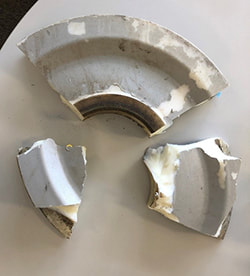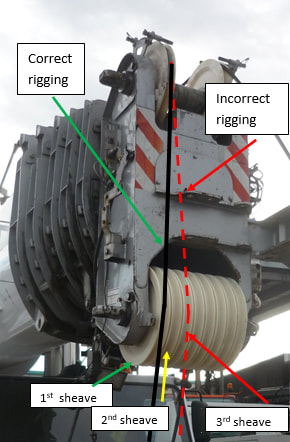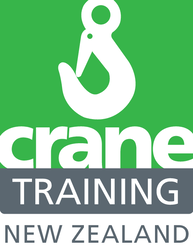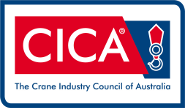|
‘Old fashioned’ values, exhibited by New Zealand crane industry heavyweight Max Whiley, live on through the second generation of the family owned and operated company, Titan Cranes Ltd.
Not prioritising profits over people and treating staff and suppliers fairly were values that have served the company well for more than 50 years. It’s the same values that Managing Director, Jan Coton (nee Whiley), says helped her father with other members found the then Power Crane Association in 1975 – now the Crane Association of New Zealand. “We’ve been part of the Crane Association and the Association has been a part of us for such a long time,” she says. And it’s the lessons of those that came before that makes a membership with the Association appealing. >> Click here to read more. For the past 12 months, Rod Auton and his wife Kui – short for Kuimira – have been living in their motorhome in preparation for a retirement spent on the road.
Despite being married for more than four decades, they thought it best to test out the living arrangements – just in case. Currently parked up at the Wellington Top10 Holiday Park, 15 kilometres from the capital, he says life is “very structured”. “We’ve been married for 41 years, so life on the road should be a piece of cake.” It’s characteristic of Rod, who hasn’t been one for settling in one place his entire life. Born and bred in Invercargill, he was out of the house aged 10 and delivering The Southland Times. >> Click here to read more. To start this month’s column, I would like to talk about the last Council meeting the Crane Association held on May 27.
One of the items discussed was the minimum qualification for overhead gantry operators, which a position paper has since been produced and is available for members on our website. It is pleasing that this will provide you, our members, with the certainty about the minimum requirements, while removing any ambiguities that might have existed previously. An opinion based on the available evidence, this paper takes a lead in an area of our industry where other parties could have pre-empted the Association’s views. This also adds to the list of other position papers devised by the Association, which is a valuable reference material for industry players as well as entities like WorkSafe. So, if you haven’t already viewed theses papers, I encourage you all to – click here. >> Click here to read more.  The purpose of this safety alert is to highlight the risk of rope sheave failure on mobile cranes. Crane owners, crane operators and workers involved in rigging cranes should apply the principles in this alert to any crane with rope sheaves. Background In May 2019, a plastic (nylon) hoist rope sheave on a 130-tonne mobile crane catastrophically failed and broke into pieces during an attempt to lift an 8 tonne load on the main winch rope (refer Photograph 1). As the sheave failed, the load dropped a short distance and applied shock loading to the hoist rope, damaging it. The main winch was rigged with three parts (falls) of rope. Fortunately, no-one was injured and damage to the crane was minor. However, the incident had the potential for more serious consequences if the lifted load was heavier. With a heavy load, failure of a rope sheave can cause complete failure of a wire rope. The sheave that failed was a top sheave on the end of the hydraulic boom. On this crane the hoist rope passes through the top sheave and then down to a sheave on the bottom of the boom tip before passing down to the hook block. Contributing factors It appears the main cause of the incident was that the hoist rope applied a side loading to the sheave, caused by misalignment of the hoist rope. Instead of the hoist rope passing from a top sheave to the sheave directly below (so that it is close to vertical), it passed from the top sheave to the third sheave along (refer Photograph 2). Sheaves are designed for loads to be applied in the direction of the sheave, so that the sheave can freely rotate with negligible side load. It is acknowledged that when rigging a mobile crane in multiple falls (parts) of rope, there will be a slight rope angle between sheaves due to the position of consecutive sheaves. As the hook block is hoisted down this angle will reduce, and any side loading applied to the sheaves will also reduce. However, for a misaligned rope on the end of a crane boom, the distance between the top and bottom sheaves stays the same and the associated side loading remains constant. Photograph 1: Failed sheave segments Action required: Mobile cranes are to be rigged in accordance with the manufacturer's instructions. The rigging set up should ensure when a rope passes from one rope sheave to another, the consecutive sheaves are aligned as closely as possible. If inspection shows that the reeving is incorrect and excessive side load is being applied to the sheaves, the sheaves should be thoroughly inspected and, if necessary, replaced with new sheaves that comply with the crane manufacturer's specifications. Regular inspection and service of rope sheaves should be carried out in accordance with the crane manufacturer's instructions during the crane's periodic safety inspections. Damaged and worn sheaves are to be replaced. At the major inspection, all rope sheaves should be removed from the crane and closely inspected for both their condition and operation. Sheaves should not be painted. Photograph 2: Example of correct and incorrect rigging on boom head Reference:
See more information here |
Archives
June 2023
Categories
All
|
|
|
|
NZBN: 9429042812272
The Crane Association of New Zealand (Inc.) has membership or reciprocal membership with the following associations



 RSS Feed
RSS Feed










